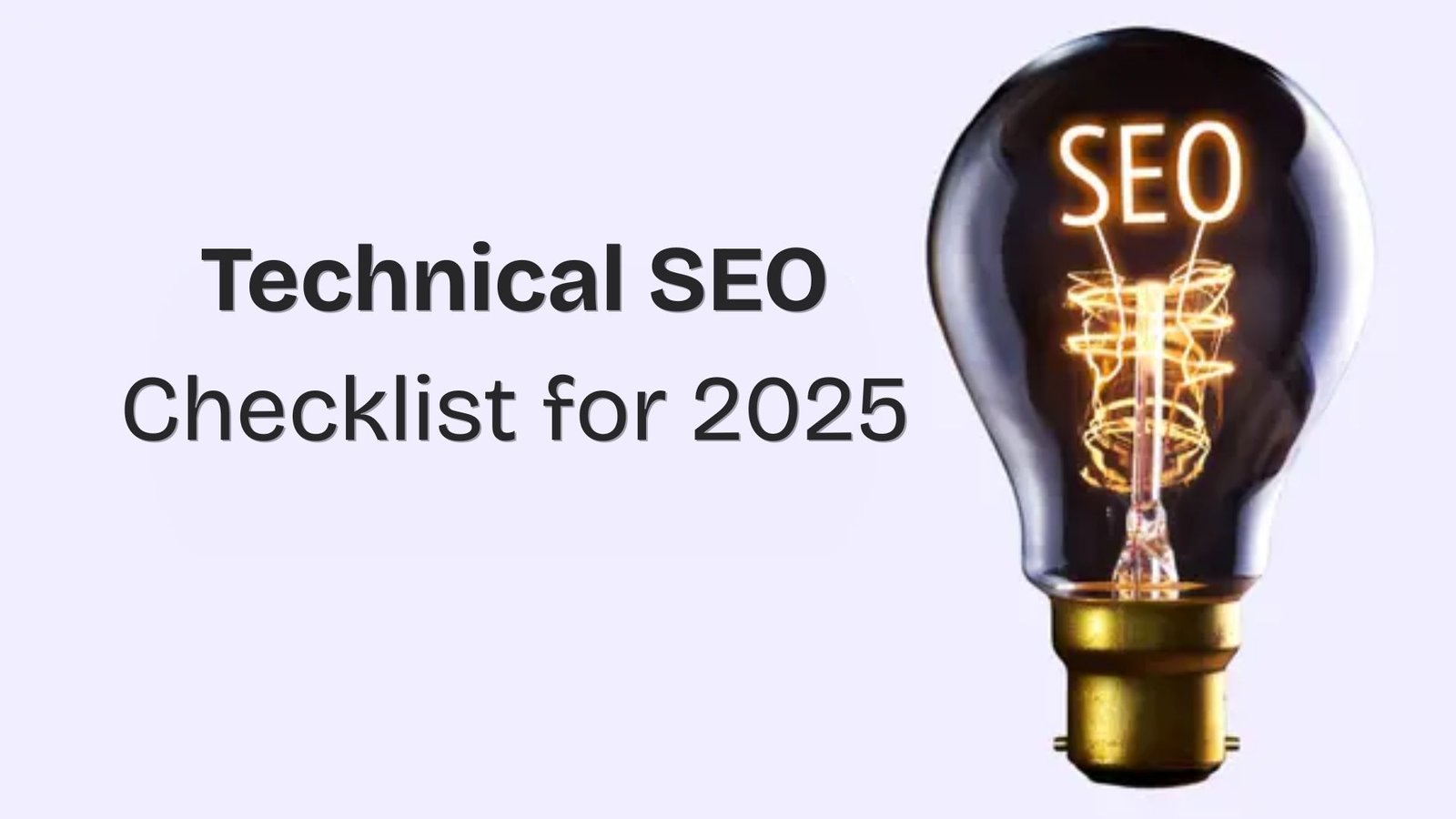In an era where user experience and page performance are key ranking signals, mastering technical SEO is essential to stay visible in search results. Whether you’re a business owner or webmaster in Hyderabad or beyond, ignoring site speed, crawlability, and structured data could be costing you valuable traffic and conversions.
Welcome to Techvint’s Technical SEO Checklist for 2025—a comprehensive, step-by-step guide designed to help you audit and optimize your website’s backend. We’ll walk you through critical areas like site speed improvements, HTTPS implementation, duplicate content resolution, indexing best practices, and structured data markup. By following these best practices, you’ll not only improve your search rankings but also provide a faster, smoother experience for your visitors, building trust and engagement along the way.
What is Technical SEO and Why It Matters in 2025
Technical SEO refers to the process of optimizing your website’s infrastructure to ensure that search engines can efficiently crawl, index, and render your web pages. It involves improving aspects like site speed, mobile-friendliness, structured data, security (HTTPS), and URL structure—elements that directly influence how your site performs in search engine rankings.
In 2025, with Google’s algorithms becoming more sophisticated and user experience more vital than ever, technical SEO is a non-negotiable part of any digital strategy. A website that loads slowly, has broken links, or lacks mobile responsiveness will struggle to rank—regardless of how good the content is.
By focusing on technical SEO, businesses can create a strong foundation that supports content visibility, improves site health, and enhances the user journey—all while staying ahead of the competition. In the sections below, we’ll walk through the most important technical SEO checkpoints to help you optimize your site for search success.
Complete 2025 Technical SEO Checklist
1. Load Faster
We hate standing in long queues, be it at a supermarket billing counter or to get tickets for my favorite movie. Similarly, wouldn’t it be frustrating for the user who has clicked on your site for a particular reason but has to wait due to the slow loading of the pages! Google eventually prefers websites that load faster to cater to a better user experience.
2. HTTPs Secure
Is HTTPS secure? HTTPS establishes an encrypted link between the browser and the server using the Transport Layer Security (previously known as Secure Sockets Layer-SSL) encryption protocol. In the rare scenario whenever your website is hacked, the data contained on it is exposed, the data cannot be edited or read. As a result, being protected by HTTPS will ensure a higher ranking compared to the less secured ones.
3. Avoid Duplicate Content
As the term implies, your website shouldn’t have content that is already published on another website. This is not only unethical, but it may also harm your ranking. When dealing with various pages with the same information, search engines may be confused about which one to rank. As a result, those pages may suffer a drop in rankings. The same goes with the duplicate pages on your website created intentionally or unintentionally that could lead up to a loss in rankings.
4. Crawlability
Your website won’t rank unless its pages are crawled and indexed properly. And this job is done by search engine robots. These robots are programmed to follow links on your website to access the content on each of the pages. If you have a good linking structure Robots will have an easier understanding of what your content is all about, which may help you rank higher. You can also tell them not to show a particular page by applying the robots.txt file, which will prevent them from crawling it.
5. Structured Data
Type ‘pizza recipe’ into the search box, and you get results showing the reviews, cooking duration, and ingredients. This is what structured data means. It makes your page on SERP appear much rich. You can do this by implementing the code available on Schema.org into your website. By doing this, it communicates a lot of valuable information describing your page to the search engines. The rich display will prompt the visitors to click on your website which ultimately generates traffic. Hence, it boosts website traffic.
Conclusion
Hopefully, this article touched on the most important aspects of the technical SEO checklist. Finally, Google’s algorithm is ever-changing. Because its primary objective is to provide the best user experience to the audience with the best content.
By now, you’ve gained a clear understanding of the key technical SEO factors that influence both search engine rankings and user experience:
- ✅ Lightning-fast site speed
- ✅ Secure HTTPS protocol
- ✅ Clean, duplicate-free URLs
- ✅ Efficient crawlability and indexing
- ✅ Rich snippets through structured data
But technical SEO isn’t a one-time task—it’s an ongoing process. As search engines evolve, so should your site’s infrastructure. Techvint specializes in helping Hyderabad-based businesses and startups maintain a solid technical foundation, ensuring your website performs flawlessly today—and is future-proofed for tomorrow.
Ready for a deeper analysis? Get in touch for a free technical SEO audit tailored to your site. We’ll uncover hidden issues, implement fixes, and help you climb the search rankings with confidence.
👉 Schedule your audit now and unlock your website’s full potential!
Follow TechVint on social media, where we educate our followers on a variety of digital topics: Facebook, Instagram, Twitter, LinkedIn
Get more knowledge bombs: 7 Common SEO Mistakes Startups Should Avoid


